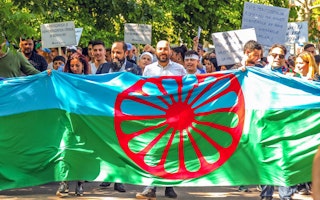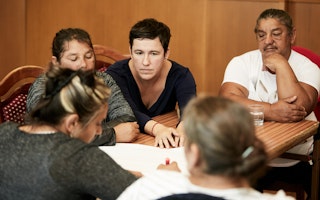A Victory for Extremism in Slovakia, and What It Means
By Andrej Nosko
Recent elections in Slovakia brought a big surprise: right-wing extremist candidate Marian Kotleba won his campaign for governor of Banská Bystrica in central Slovakia. The former leader of a now-banned neo-Nazi party, Kotleba heads People’s Party-Our Slovakia, which organized a series of anti-Roma marches. I spoke with Radka Vicenová of the Centre for European and North Atlantic Affairs about the elections.
Why did the victory of Marian Kotleba cause such a surprise? What happened?
This was the first time that Marian Kotleba, the leading figure of the Slovak extreme-right movement, gained significant political success and reached a fairly high position. During the last two parliamentary elections, his People’s Party-Our Slovakia gained only marginal numbers of votes, and this is why the increase in regional support is so alarming.
For a significantly large number of voters, a right-wing extremist was far more acceptable than any other regional politician, which is the most shocking outcome.
What does Kotleba offer to his voters? Are there other reasons for his victory?
Kotleba doesn’t have a political program in the strict sense; he rather builds his campaign on populist statements, calling for solutions to the most burning issues in simplistic but appealing way. This is reflected in two points of his election manifest: the need to ensure safety in the surroundings of Roma settlements and to fight "unfair favoritism of Gypsy parasites."
The fact that Kotleba succeeded without presenting a detailed strategy of intended changes in the broader context proves that the level of frustration has reached alarming levels. The choice for a person with a neo-Nazi background for the leading position in the region can be seen as kind of litmus test for the attitude of citizens toward the social, economic, interethnic, or corruption situation in the region.
What are the causes of the increased support for Kotleba? Why did mainstream candidates both on the left and right fail?
There are several factors that helped Kotleba win. The massive media anti-campaign that emerged after the first round could be one of them, especially since it was accompanied by constant mutual accusations of mainstream politicians over who was to blame. This could have deepened general mistrust in regional policy.
We must also consider the unfavorable socio-economic conditions and strained interethnic relations which worsened dissatisfaction with candidates of other political parties, including the former leader of the region. They were unable to provide real and satisfactory alternatives to the election of right-wing extremist.
Is this development peculiar to central Slovakia, or does it have pertinence to the whole of Slovakia or Europe?
The region of Banská Bystrica is characteristic for very bad socio-economic conditions, including the high unemployment rate or low average wage. Majority-minority relations are extremely tense, especially in the surrounding of Roma settlements. This creates fertile ground for the populist, ultra-nationalist, and xenophobic rhetoric of Kotleba and his political party.
The factor of anti-establishment votes, stemming from citizens‘ frustrations, was significantly underestimated by mainstream political parties. During the roundtable meetings that the Centre for European and North Atlantic organized earlier this year for first-line practitioners in the region of Banská Bystrica, we came to the joint conclusion that it is precisely the lack of attention by politicians to the moods and opinions of the local population that encourages this protest voting for extreme solutions.
If politicians‘ attitudes and insufficient dedication to providing complex solutions to economic and social issues remain unchanged, Kotleba and his party will gain opportunities for increased support in other regions as well.
What consequences will this election have on Banská Bystrica, as well as Slovakia and the EU?
Central Slovakia will surely be the center of attention in the following period. However, media attention has proved to be a double-edged sword because it can be easily used by extremists to present themselves as martyrs in their anti-establishment fight.
This "martyr effect" can be multiplied by the fact that the new governor will not have support among members of the regional council, providing him with an excuse for any failures. Moreover, by victory in regional elections, Kotleba and his party have not only strengthened their regional base in Banská Bystrica, but possibly also their position in other regions since this may be perceived as symbolic encouragement for party members and sympathizers for future elections. We saw a very similar development in Hungary, where Jobbik jumped from 2.2% in 2006 to 16.67% in 2010 after their surprising success in the 2009 European elections.
Are there any lessons to be learned for other countries?
It is true that this is not the only case of a sudden rise of support for right-wing extremists in Europe. We have seen very similar developments in Hungary, France, Greece, and the Netherlands, and the threat is still highly relevant in numerous other countries. Socio-economic conditions are likely to worsen, deepening inter-cultural and inter-ethnic conflict. As a consequence, public opinion may radicalize and acceptance of extreme solutions increase.
More attention must be given to the primary reasons behind the growing extremist trends. It has proved very dangerous and irresponsible to underestimate the potential of gaining broad public support based on nationwide frustration.
Until August 2018, Andrej Nosko managed the Governance and Policy Debates Unit at the Open Society Initiative for Europe.


